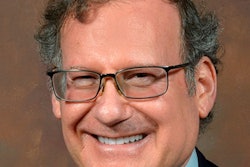
What's in a name? Apparently a lot when it comes to nuclear medicine. Physicians who identify themselves as nuclear medicine specialists devote at least 90% of their time to nuclear medicine duties, while most who call themselves nuclear radiologists or nuclear cardiologists devote 10% or less, according to a study published online August 7 in the American Journal of Roentgenology.
Based on a five-year review of work relative value units (WRVUs), nuclear medicine physicians interpreted more general nuclear medicine studies, while nuclear radiologists focused more on cross-sectional scans. Both specialists, though, shied away from clinical evaluation and management services, which accounted for less than 2% of their efforts.
"This latter finding may present an emerging opportunity for nuclear medicine specialists who perform therapy with resultant patient contact to build their practice, particularly as new theranostic techniques emerge in the marketplace," wrote lead author Dr. Patricia Balthazar and colleagues from Emory University and NYU Langone Medical Center.
As many as two-thirds of nuclear medicine studies are interpreted by physicians who are not certified for those duties, according to the American Board of Nuclear Medicine (ABNM). In addition, nuclear medicine practitioners who stay exclusively within their expertise interpret fewer than 25% of all nuclear medicine exams, with cardiologists and radiologists interpreting most of the remainder, the authors noted.
With those disparities in mind, Balthazar and colleagues sought to determine which services are handled by physicians who consider themselves nuclear medicine specialists.
The researchers reviewed data from the U.S. Centers for Medicare and Medicaid Services (CMS) and the U.S. Census Bureau for calendar years 2012 through 2015. The primary outcome was based on the percentage of nuclear medicine in WRVUs per physician per specialty group.
A total of 1,583 physicians called themselves nuclear medicine specialists and fit the inclusion criteria. From their records, Balthazar and colleagues discovered their work patterns were "highly variable."
For example, 86% of their efforts were directed toward diagnostic nuclear medicine services, compared with 12% of their time for nonnuclear-medicine noninvasive imaging services. Nuclear radiologists filled that gap by devoting 71% of their work to nonnuclear-medicine noninvasive imaging services, compared with 27% of their WRVUs going toward nuclear medicine duties.
Both nuclear radiologists and nuclear medicine physicians spent less than 2% of their time on clinical evaluation and management services.
| Most common imaging services provided by nuclear radiologists and nuclear medicine specialists | |
| Counts* | |
| Nuclear radiologists | |
| Chest x-ray (1 view) | 1,423,000 |
| Chest x-ray (2 views) | 862,900 |
| CT, head or brain | 394,100 |
| Mammography screening | 314,500 |
| PET/CT | 254,900 |
| Nuclear medicine specialists | |
| PET/CT | 167,400 |
| Cardiac stress and rest test | 145,500 |
| Bone density | 126,400 |
| Bone and joint imaging | 83,000 |
| Lung | 49,800 |
Nuclear medicine appears to be a heavily male-dominated specialty, with men making up 80% of self-identified specialists. These physicians work almost exclusively in urban practices (98%), as well as in nonacademic groups (62%).
"These characteristics prevailed for all specialty groups with the exception of nuclear medicine physicians, whose practices were evenly split between nonacademic (50%) and academic (50%) practices," the authors added.
How can these results benefit nuclear medicine going forward? Balthazar and colleagues suggest the findings provide a foundation upon which to "develop meaningful quality measures, as well as to inform policymakers and training programs about the current status of the nuclear medicine workforce."



















